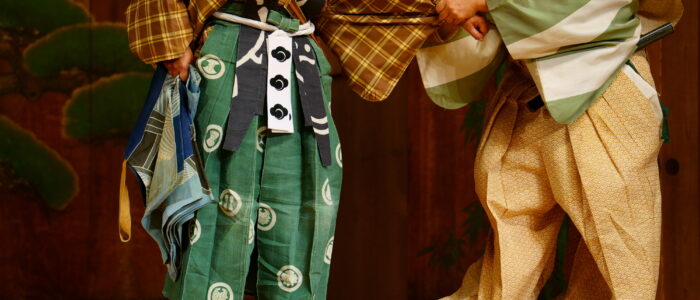Kamakura Noh Stage (鎌倉能舞台)
What Is Kamakura Noh Stage (鎌倉能舞台)? — History and Background
Kamakura Noh Stage is a cultural venue dedicated to the art of Nohgaku (能楽), which is recognized as a UNESCO Intangible Cultural Heritage. Established in 1971, this stage was built in Kamakura, a city with history tracing back to the Kamakura Shogunate (鎌倉幕府), to ensure the preservation and succession of Noh and Kyogen. Through partnerships with educational institutions and workshops for children, Kamakura Noh Stage actively fosters cultural transmission to future generations.
Highlights — Architectural Beauty and Immersive Stage Structure
The stage features about 150 seats, with zabuton (floor cushions) at the front and chairs from the center to the back, allowing the audience to feel intimately close to the performers—even able to hear their breathing and the soft rustle of costumes. Behind the cypress stage stands a mirror panel (kagami-ita) painted by Takigawa Senpu (瀧川洗風), depicting an ancient pine and bamboo, creating a sacred space where gods and humans meet. The structure is extremely minimalist with no stage lighting or curtain, supporting the symbolic, imaginative essence of Noh drama.
Cultural Significance
Nohgaku encompasses a variety of forms, from Shinto ritual performances (Shinji Noh) to refined entertainment for the samurai class (Kansho Noh). As a highly spiritual art, the audience interprets emotions through gestures and the angle of masks, experiencing a deep resonance with the story. Noh is both a stage art and a spiritual ritual that inspires introspection and purification—an embodiment of Japanese spiritual culture.
Experiences & Local Delicacies
Inside the facility, the Japanese café “Noh Stage Saryo Kagura (能舞台茶寮 神楽)” is popular for its Noh Mask Latte and sets of matcha and seasonal wagashi (Japanese sweets). This quiet valley café offers a relaxing view of the stage, and the tableware is crafted at Kitachu-gama (其中窯) in Kita-Kamakura (北鎌倉). Café guests can freely view the exhibition room, and terrace seats are pet-friendly.
Access and Opening Hours
Kamakura Noh Stage is just a 7-minute walk from Hase Station on the Enoden (江ノ電) line, yet is surrounded by a tranquil valley. Regular performances are held at 10:00 a.m. and 2:00 p.m., with doors opening before each show. On days without performances, the venue opens as the Nohgaku Museum (能楽博物館, admission required, irregular holidays), where you can view the stage and costumes.
Best Time and Season to Visit
Special performances take place in spring and autumn, when the changing natural scenery enhances the world of Noh. Since showtimes are limited, it’s best to allow flexibility in your schedule. As a cultural experience easily missed on a day trip, Kamakura Noh Stage adds quiet depth to your stay at Tosh’s Place (トシズプレイス). Even during busy daytime hours, it remains a relatively peaceful spot—an exclusive luxury for those staying nearby.
Nearby Spots — Walkable Attractions
Around Kamakura Noh Stage, you’ll find quiet temples, valley paths, and cultural sites for peaceful exploration. Within walking distance are the Great Buddha of Kamakura (高徳院・鎌倉大仏), Hase-dera Temple (長谷寺), known for Japan’s largest wooden standing statue of Kannon and seasonal flowers, and Yuigahama Beach (由比ガ浜), a coastline with history dating back to the Yayoi period—making it an area where you can enjoy both nature and history.
Recommended For — By Purpose, Interest, and Travel Style
- Those who want to experience Japanese traditional performing arts
- Travelers who enjoy quiet, self-paced trips
- Anyone looking to refresh their mind through cultural experience
- Visitors seeking spiritual enrichment away from daily life
- Guests at Tosh’s Place (トシズプレイス) wishing for a flexible and relaxed itinerary
Wrap-Up — The Value of This Place and the Enjoyment During Your Stay
Kamakura Noh Stage is a valuable cultural venue where you can truly experience the world of traditional Noh. Time spent here offers a special chance to step away from the everyday and restore your spirit. As a cultural site that’s difficult to visit on a day trip, it’s best enjoyed with the flexibility of a longer stay. If a performance is scheduled during your time at Tosh’s Place (トシズプレイス), don’t miss the opportunity to see a live Noh performance. Immerse yourself in the heart of Japanese spiritual culture and savor the luxury of silence and artistry.

